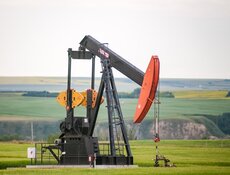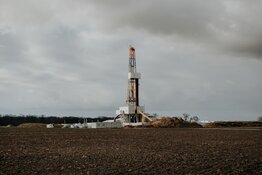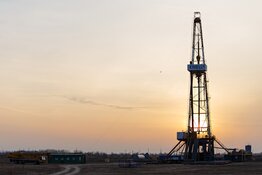Bill Koenig: Changing population demographics is a key driver altering the resource landscape. In North America, the two biggest groups are the "Baby Boomers" and the "Echo Boomers." They make up approximately 50% of the population. The Baby Boomers already have their house and car, and are generally saving up for retirement, not consuming. Their kids—the group between 15 and 29—are essentially in the same mode. They're saving up for university, their first house, their first brand-new vehicle. Europe is pretty much the same way. As a result, we have fewer consumers, and so you wouldn't expect the same demand level for goods and items as you would previously.
On the other hand, the demographics of Brazil, India and other developing nations look like a bell chart, showing smooth population growth at the bottom level. That suggests increasing consumption. We've designed our portfolios around what those areas want, not so much what North America wants anymore. As things unfold, these changes haven't come as much of a surprise to us. It's really what we've been talking about for two years.
TER: Your MineralFields and EnergyFields funds are basically flow-through funds, which have to be invested in Canadian assets for Canadian citizens to get the tax advantages. Is that right?
BK: Correct. But the key for us is a focus on what it is we think is going to be required in greater demand levels globally. Global demand will drive Canadian assets as well. We think a lot of the problem with current market behavior is that average investors are looking at North American and European news, and not focusing on what's coming from other countries.
TER: Obviously, we have had our shot of growth and development in North America and Europe, and so now it's time for the rest of the world to catch up.
BK: And it is catching up at a very fast pace. You just can't keep adding bodies without increasing consumption, right? Even at the most basic level, energy demand is going to keep increasing. If you go into the International Energy Agency's website and look at their monthly report, one of the things they do is show a five-year trend line. For the most part, you'll see North America and Europe below the trend lines and the developing countries way above their five-year trend line, which supports our demographics argument.
TER: Relating to that, how have your funds been performing in this big energy and metals boom we've been in?
BK: Up until the last couple of months, they were doing quite well, but if the world decides it should bring the markets down, we're going to go with it. I do think we've weathered this storm quite well. The stuff we're supposed to invest and just sit on, we're just riding through. The mutual funds that we've invested in actually have the advantage of being in a large position of cash, now about 25% of the mining portfolio. That's helped us ride out it quite well.
TER: There certainly are some real bargains out there now and it's got to be a great time to pick up the ones that have real potential.
BK: That's true. This is my third or fourth cycle through this type of mentality. The last time it was bank stocks, and I think they drove a stock like BMO [Bank of Montreal] down to $22–$23. When you looked at BMO fundamentally, what they did every day hadn't changed. Right? They had taken deposits and made loans. Sure enough, once the irrational exuberance ended, that stock more than doubled. You're right; there are absolutely some fantastic bargains out there, but you can always count on the market to either overreact or under react, never to get it right.
TER: Can you explain a little more how flow-through funds work?
BK: Sure. Flow-through is a tax-advantage product through which resource companies can pass on their exploration expenses to Canadian investors, who can use that expense to reduce their revenue earnings. So, we're either the largest or the second-largest flow-through in Canada. We don't do really large raises; we tend to do one raise after another. So we are constantly on the market.
The philosophy behind that is that we would rather divide the market up into various quadrants through a year and invest accordingly. As a result, almost every year we have some of the top-performing flow-through funds out there.
Traditionally, flow-through funds are out there as limited partnerships for 2–3 years. Then the shares get rolled into a mining or a resource fund. At that point, investors have the option of liquidating their position through the mutual fund.
One thing that differentiates us from the majority of the funds out there is that we really pride ourselves on fast rollover of our funds. Typically that has been a year or less from the creation of the LPs until our rollover.
TER: Looking at prospects for energy development here in North America, obviously your focus is on Canada. What opportunities do you see there?
BK: The prospects are actually quite huge. The big change has been in fracking technology, where they've been able to tap into a lot of formations that were not previously commercial. This could open areas that are, for example, 200,000 square kilometers in size or a hydrocarbon blanket that suddenly becomes commercially viable. Now, a lot of these companies can come out and say, "Look, we've got 10,000–20,000 drilling locations within our company alone." From that point of view, the energy resource sectors have never been in better shape.
TER: So, as far as you're concerned, we haven't hit peak oil.
BK: I was one of those guys who never bought into that. I think they should have said, "peak cheap oil," and that might have made sense. There was always a lot of oil. It was just a question of the cost thresholds. Certainly, we have found a lot of the cheap stuff; but now these unconventional and tight sands are actually bringing the costs down as producers get more experienced, so it's becoming cheaper and cheaper to find.
TER: Fracking has been used on oil wells for as long as I can remember. What's the difference between what's being done now versus the last 40-50 years?
BK: The biggest change has been the fact that they can go horizontally and put multiple fractures into that horizontal well. Previously, they would just drill into it vertically, fracture it, and you would only get a limited production radius. Every time you frack a well, it's the equivalent of drilling one vertical well. If a company says that in one horizontal they're going to do a 20-stage frack, that's the equivalent of doing 20 vertical wells.
TER: With one hole.
BK: Right. So as you can imagine, the economics have all of a sudden drastically improved. That's been the big change.
TER: The other area that has some real growth potential is Canada's oil sands in Alberta, which are supposedly the second-largest oil reserves in the world. What can you tell us about that and what are the prospects for further development?
BK: Technically, I think Venezuela has the second largest, and Canada would be the third. The oil sands represent long-term consistent production. They have always been attractive to the majors because you can plan your capital expenditure programs. The biggest operating cost for producing from oil sands was natural gas. When natural gas was up around $7, the economics really started to diminish. Fracking has made it possible to produce natural gas quite easily and cheaply. That's what helped drive a lot of the economics into the oil sands.
TER: What would you say is the average cost per barrel to produce oil from the oil sands at this point?
BK: On the mining side, I would say your average cost is going to come in around $30-$40. Compare that to what a company like Crescent Point Energy Corp. (CPG:TSX) is doing on its lands. Its operating cost will come in around $27. So, the price that they're getting for netback is that much more superior to what you will get from the oil sands. The tradeoff is that, depending on the size of your reserves on the oil sands, you could be operating for say, 50-70 years. With these unconventional resource plays, you might get 20 or maybe 30 years, but that's yet to be proved.
TER: What is it that Crescent Point is doing that's different than other producers?
BK: Well, Crescent Point is entirely focused on unconventional oil plays, primarily in the Bakkan area.
TER: With oil sands, they know it's there and it's just a matter of how much they want to produce, and how much they can afford to produce based upon the economics.
BK: These are projects that cost billions of dollars, so they're for the big boys, whereas with unconventional resources, even a small player can lock up some land and start adding production.
The other concern with oil sands is infrastructure. Where are you going to get the bodies to build the facilities? The problem companies consistently run into is their need for skilled workers—the pipefitters, the plumbers, the electricians. Companies focusing on building up unconventional plays will need gathering facilities and tank batteries. If they're working in natural gas, they've got to put up gas plants, which require the same trades. Quite often, the oil sand and natural gas producers are at loggerheads to get the best employees.
TER: Is there talk of importing skilled labor from abroad?
BK: Various options have been discussed. Some are looking at bringing them in from China or Colombia. Again, it's the skill sets that determine where competitive labor markets are.
TER: So, the main constraints on increasing oil sands production are the huge capital costs because of the scale of these mining and chemical recovery processes, along with finding qualified employees. Right?
BK: Essentially, yes. It's easy to set sights on a project, but consider a place like Fort McMurray, Alberta. Transport Canada is scrambling to get some more bodies up there just to cover airport security. The government brings them up to work at the airport and they jump ship for twice the pay, driving trucks or doing similar physical work.
The biggest boomtown in North America over the last couple of years has been Minot, North Dakota, which is right in the heart of the Bakkan play in the U.S. Now we're hearing the same sort of tales in Texas, where the Eagle Ford play is taking place. These industries compete all the time with each other to fill these types of positions. I saw a statistic the other day that said the biggest job growth in the U.S. is in the oil and gas service sector.
TER: Getting back to what you do every day—what kind of criteria do you use in making the selections for your portfolios?
BK: Management experience and land position are very important to us. We tend to do rankings based on both before we invest. With respect to management experience, we would want to see people who have been there and successfully explored and found profitable assets.
On the land side, we're looking for either a dominant land position on a new concept or simply an extensive land position. If they don't have that, what we would like to see is if they're adjacent to hot new exploration areas where chances are the exploration will spill over onto their lands. Typically, the companies that we're investing in do not have earnings. It's an all-or-nothing investment; either they hit with their exploration or they don't. That's the nature of the beast for our investment process.
We do look at other factors like share structure, and the financial shape of the company. The key to all of this is the ability of the company to properly release news on a regular basis on what they're up to, just so other investors can stay tuned and follow the progress. The last thing we want to do is invest in a company that plays, "I've Got a Secret."
TER: Do you buy stocks expecting a catalyst and exit once that's achieved? Or do you enter for the long-term?
BK: Because we roll our funds over on a fairly consistent basis, a lot of our investors want to be in for the tax deduction but don't want to hold mutual funds. What they will do on a rollover is liquidate their position and buy more flow-through funds for the tax deduction. As a result, it puts us in a situation where, in a mutual fund, we will have to liquidate positions on a regular basis and we high grade the winners and sell off the ones that are marginal or have had neutral results.
TER: So in the flow-through funds, you're really in the business of creating investment capital for companies.
BK: Yes. Our role is to provide them with new capital to carry on their latest exploration idea.
TER: So, are you still quite bullish on the overall potential for energy and resource investments?
BK: Absolutely. The wave of buying is going to start occurring in North America and Europe in about the next 2-3 years when the Echo Boomers start to come out. When you combine that with what's going on with demand growth in developing nations, it's going to be "Game On," big time.
You should also keep an eye on China's impact on the energy sector. China is currently the dominant consumer in almost all the commodities in the world, yet they're only 10% of the oil market. One wonders how long it's going to be until the Chinese up their oil consumption as well.
TER: When another 10% of China's population starts driving, we're going to be in trouble.
BK: Yes. Seven or eight years ago, there were maybe three cars per 1,000 people in China. Now they are up to around 60 cars per 1,000 people. That momentum will carry on.
TER: On that note, thank you for your valuable insights into the energy field and oil sands.
BK: Thanks for the opportunity.
As an early pioneer in the process of institutional investing in small-cap companies, William (Bill) Koenig has many years of experience in the resource sector. He was chief investment officer of the Norrep funds (Hesperian Capital) and helped oversee the growth of assets from $70M to over $900M in four years. He has more than 20 years of experience in the natural resource sector as a research analyst and portfolio manager. As a research analyst, he was noted for identifying early-stage companies whose growth profile would allow them to become some of Canada's biggest resource companies.
Want to read more exclusive Energy Report interviews like this? Sign up for our free e-newsletter, and you'll learn when new articles have been published. To see a list of recent interviews with industry analysts and commentators, visit our Exclusive Interviews page.
DISCLOSURE:
1) Zig Lambo of The Energy Report conducted this interview. He personally and/or his family own shares of the following companies mentioned in this interview: None.
2) The following companies are sponsors of The Energy Report: None.
3) Bill Koenig: I personally and/or my family own shares of the following companies mentioned in this interview: None. I personally and/or my family am paid by the following companies mentioned in this interview: None.








































